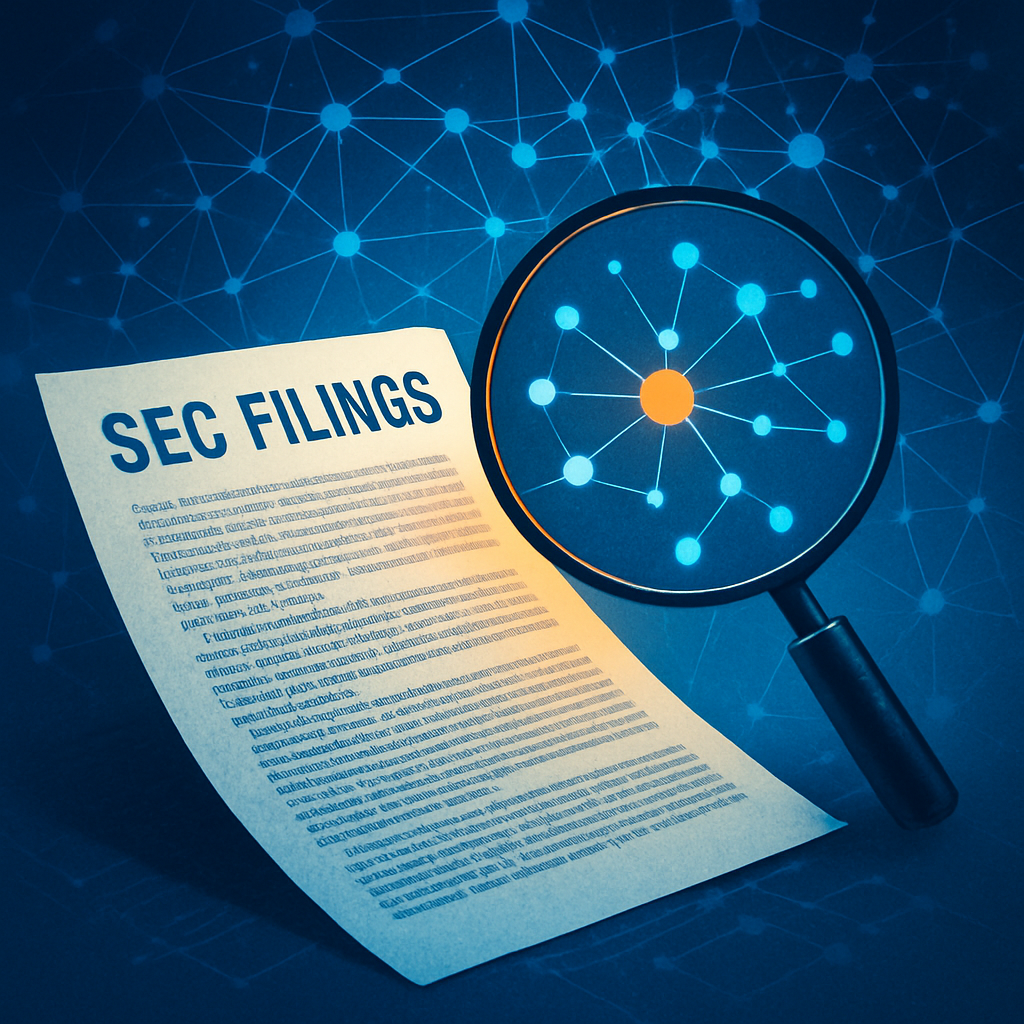Understanding the relationships between companies provides useful insights for anyone seeking an edge. Some opportunities include the following.
- Alpha Generation – Identify hidden relationships: e.g., shared board members, shell entities, or cross-holdings that precede market-moving events
- Compliance & Risk – Detect connected parties for regulatory risk or governance concerns (especially relevant in 13D activism or insider trades)
- Strategic Deal Intelligence – Map influence networks in M&A, fund holdings, and private equity ecosystems
- Competitive Intelligence – Visualize alliances, competitors, or supplier relationships from 10-K and other disclosures
- Analyst Efficiency – Replaces manual tracing of relationships across filings
- Edge – Very few retail or even mid-tier firms do relationship-level analysis of filings. Most tools focus on individual filings, not the web of connections across people, entities, and timing.
Company relationships are buried in SEC documents. SECeek uncovers the data and creates a graph of the network graph, where the nodes are the companies and an edge exists between related companies. A neighborhood of a given company consists of all the companies that are connected (i.e., reachable) from that company. Below is an example of a company neighborhood. The subject company is immediately related to six other companies and indirectly to 31 more.
We mapped the archipelago of neighborhoods (islands in the global neighborhood). At the time this article was written there were 535,406 individual companies and 131,899 neighborhoods. Unsurprisingly, many companies (24%) are not related to another company, i.e., single-node islands. On the other hand a whopping 36% of all companies (191,885) belong to one, very large neighborhood The table below summarizes the neighborhood sizes. It shows the neighborhood and how many. Additionally, the percentage of companies that are in those neighborhoods as well as the percentage of neighborhoods of the size.
| Neighborhood size | # of neighborhoods | Percentage of companies | Percentage of neighborhoods |
| 1 | 126879 | 23.7% | 96.2% |
| 2 | 3030 | 1.1% | 2.3% |
| 3 | 584 | 0.3% | 0.4% |
| 4-10 | 942 | 1.0% | 0.7% |
| 11-99 | 454 | 1.7% | 0.3% |
| 100-999 | 9 | 0.5% | 0.007% |
| >1000 (ie, 191855) | 1 | 35.8% | 0.001% |
Each company has a set of immediate neighbors. One can deduce from the above table that 24% of all companies have no immediate neighbors. The table below shows the number of companies and the number of their immediate neighbors. For the most part the number of companies decreases monotonically as the neighborhood size increases. Two dozen companies have more than 800 immediate neighbors, the most connected has 948.
| Immediate neighbors | # of companies | Percentage |
| 0 | 126,879 | 23.7% |
| 1 | 112,748 | 21.1% |
| 2 | 23,395 | 4.4% |
| 3 | 10,266 | 1.9% |
| 4 | 6,028 | 1.1% |
| 5 | 3,970 | 0.7% |
| 6 | 3,261 | 0.6% |
| 7 | 2,776 | 0.5% |
| 8 | 2,382 | 0.4% |
| 9 | 2,248 | 0.4% |
| 10 | 2,974 | 0.6% |
| 11-25 | 12,191 | 2.3% |
| 26-50 | 8,845 | 1.7% |
| 51-100 | 6,730 | 1.3% |
| 101-200 | 8,146 | 1.5% |
| 201-300 | 4,559 | 0.9% |
| 301-400 | 2,361 | 0.4% |
| 401-500 | 1,876 | 0.4% |
| 501-800 | 1,859 | 0.3% |
| 801-948 | 27 | 0.01% |
This investigation uncovers interesting and surprising data that we will be investigating in subsequent articles. We will look into the massive neighborhood of nearly 200 thousand companies. How are all these companies connected? What kind of companies have more than 800 relationships with others? Some relationships are more than a decade old. What does the neighborhood graph look like if you only consider connections in the last 10 years or 5 years?

